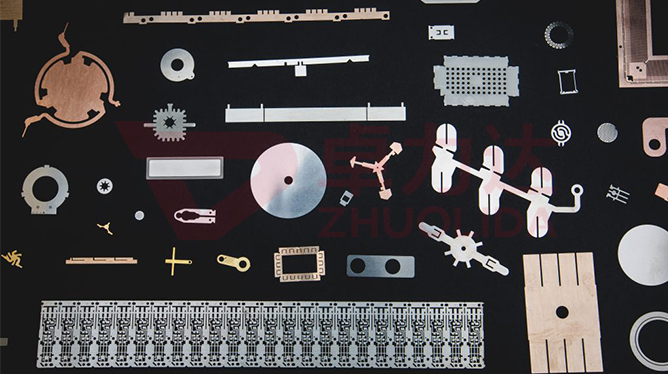
Custom metal corrosion machining is a process that utilizes a chemical reaction to remove the surface of a material. In this process, the surface of the material is exposed to a corrosive agent, which chemically reacts with the surface of the material, causing the surface to be gradually dissolved and corroded, thus achieving the purpose of the process. In the process of metal corrosion custom machining, the generation of R angle is due to a combination of factors.
First of all, metal corrosion custom processing is an isotropic processing method, that is, the corrosion reaction on the surface of the material occurs uniformly, without direction. This means that at any location on the surface of the material, the corrosion reaction takes place in the same way. Therefore, when metal corrosion custom machining produces a corrosion reaction on the surface of a material, it does not only corrode the material in the vertical direction, but also produces some corrosion in the horizontal direction. This corrosion in the horizontal direction then leads to R-angle on the surface of the material.
Secondly, the reaction rate of metal corrosion custom processing is affected by a variety of factors, including the concentration of the corrosive agent, temperature, reaction time and so on. Under the effect of these factors, the corrosion reaction may produce a faster reaction rate at some locations on the material surface and a slower reaction rate at other locations. This uneven reaction rate can also lead to R-angles on the surface of the material.
In addition, the nature of the material itself can also affect the generation of R-horns during custom processing of metal corrosion. Different materials have different crystal structures and chemical compositions, which can cause the corrosion reaction to produce different reaction rates at different locations on the material surface. For example, in some materials, the arrangement of the crystal structure may result in a faster corrosion reaction at certain locations, resulting in R-angle.
Finally, the operating conditions and process parameters during the metal corrosion custom machining process can also affect the generation of R-horns. For example, if the concentration or temperature of the corrosive agent is not uniform during the metal corrosion custom machining process, or if the reaction time is not sufficient, it may result in the generation of R angles on the surface of the material. In addition, if the vibration or disturbance during the process is too large, it may also lead to the generation of R angle on the surface of the material.
In summary, the generation of R angle during metal corrosion custom machining is due to the combined effect of a variety of factors, including the isotropic properties of metal corrosion custom machining, the inhomogeneity of the corrosion reaction, the nature of the material itself, and the influence of operating conditions and process parameters. In order to reduce the generation of R angle, some measures can be taken, such as optimizing the concentration and temperature of the corrosive agent, controlling the reaction time, and improving the processing equipment and process. Through the effective implementation of these measures, the precision and quality of metal corrosion custom processing can be further improved.
Contact: andy_Lai
Phone: 18938693450
E-mail: yw9@zldsmt.com
Add: Building A3, Huafa Industrial Park, Fuyong Town, Fuyuan Road, Fuyong Town, Baoan District, Shenzhen,China